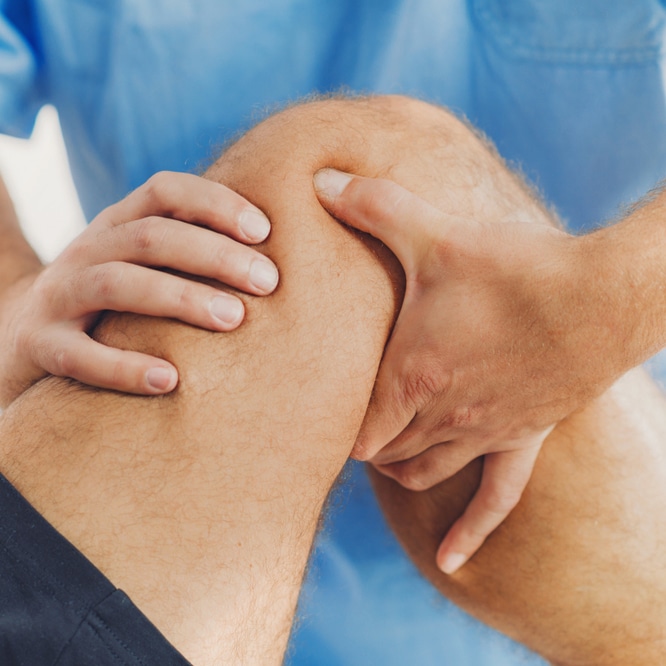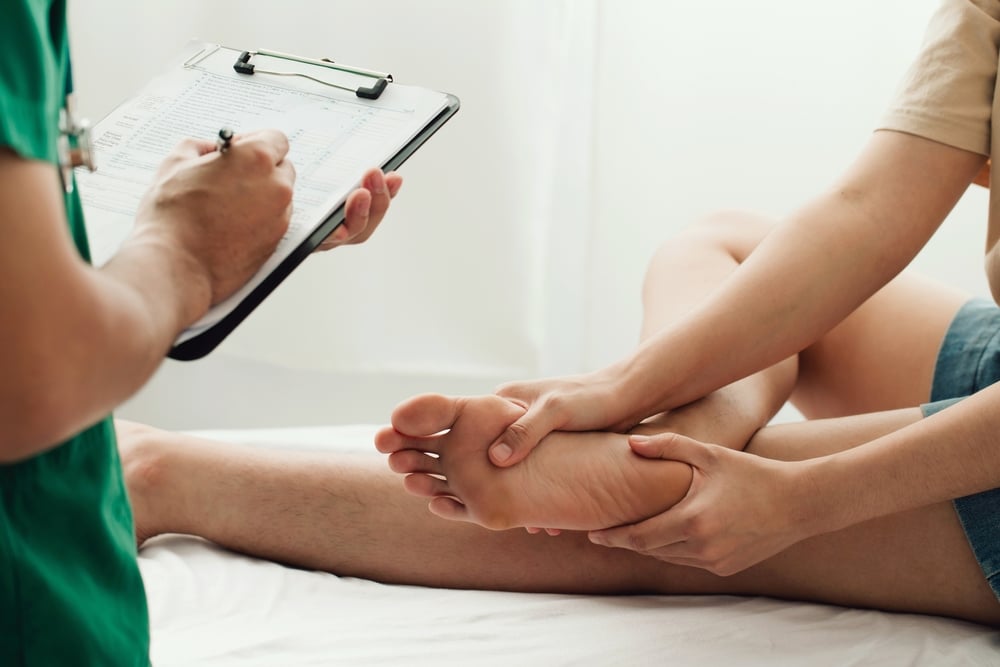


If you’ve never visited an osteopath before, you’d probably like to know more about osteopathic treatment, in order to make an informed decision about the right treatment for you and what to expect from osteopathy. On this page I’ll explain what osteopathy is, what training osteopaths have, what osteopathy can treat and what to expect from your first visit.
I am an osteopath with clinics in York and Malton. I am registered with the General Osteopathic Council and Institute of Osteopathy and offer treatment for a wide range of musculoskeletal and related issues. There are no long wait times, and appointments are normally available within 48 hours.

Osteopathy is a hands-on physical therapy concerned with the correct functioning of the musculoskeletal system. Osteopaths are experts on the spine and joints, muscles and nerves of the body, making osteopathy an ideal treatment for postural issues, back pain, joint issues and problems related to aches and pains, stiffness and so on.
Osteopathy is a holistic treatment, meaning that osteopaths are trained to consider the body as a whole, and to understand the interconnectivity between its different structures. As such, osteopaths are often able to diagnose the underlying cause of an issue which might manifest in one area of the body but have its root cause in another area – for example, back pain caused by inappropriate shoes.
Osteopathic treatment plans are always individualised and bespoke, unlike therapies which simply provide the same treatment or prescribe the same exercises based on the location of pain. Osteopaths do not prescribe drugs, and you can see an osteopath without a referral from your GP.
Osteopaths use a wide range of physical therapy techniques depending on the nature of the particular problem they are treating. Osteopaths are particularly known for their direct manipulations of the spine and other joints, called high velocity thrusts, used to safely push joints or spinal vertebrae back into correct alignment. This can create a sound like a click or crack, but is perfectly safe and painless.
Osteopaths also use techniques common to many physical therapies, such as deep tissue massage, joint manipulation and mobilisation, and stretching. At your first appointment your osteopath will explain the most appropriate treatment techniques for your particular problem.

Due to its focus on biomechanics and the musculoskeletal system, osteopathy is an ideal treatment for any spine- or joint-related problems such as back pain, neck pain, knee pain, foot and ankle pain, and so on. Osteopaths can also help improve your posture and give advice on lifestyle factors such as correct workstation setup, best mattress, etc.
Osteopaths also frequently treat repetitive injuries such as carpal tunnel syndrome, tennis elbow and plantar fasciitis, caused by frequent overuse of the affected area such as by typing for long periods, or lots of walking. Osteopathy is also ideal for most minor sports injuries such as sprains and strains, and running injuries.
Osteopaths can also treat many other conditions which have a musculoskeletal factor. These include nerve issues such as sciatica and trapped nerves, certain types of headaches including migraine management and prevention, and help to manage chronic conditions such as fibromyalgia or neuralgia.
For a list of all conditions that are treatable with osteopathy, please see our what we treat page, or if you would like to discuss whether osteopathy can help in your particular case, please don’t hesitate to contact us and we will be happy to advise.
Osteopaths undergo a minimum of 4 years training and are qualified to degree level or higher. Osteopaths are regulated in the UK by the General Osteopathic Council and osteopathy is one of the 14 recognised Allied Health Professions. Many osteopaths also work in musculoskeletal departments of the NHS. All osteopaths also undertake a certain amount of Continuing Professional Development, to stay up-to-date with the latest developments in physical therapy medicine.
Osteopaths are also trained Primary Care Practitioners, able to make an accurate diagnosis in the first instance and refer you to another service or for further diagnostic tests if appropriate.


I have been an osteopath since 1998, treating patients in a wide range of clinical settings both in private practice and for larger organisations. I am registered with the General Osteopathic Council and Institute of Osteopathy, and with most major health insurers.
I focus on getting you better as quickly as possible. All my treatments are personalised and bespoke, and booking is session-by-session without any tie-ins.

Your first appointment is 45 minutes long, allowing plenty of time to explain what has brought you to the clinic to carry out a full examination both of the affected area and of your general biomechanics. I will also ask you briefly about your medical history and any relevant lifestyle factors.
I will then explain your diagnosis to you along with the most appropriate treatment plan. You will receive treatment at the first appointment and should notice an improvement in your symptoms from this first session. Please note that depending on your treatment you may need to remove clothing down to your underwear, although there are many options such as shorts which are also acceptable. Please contact me if you have any concerns.

I’m here to help. Please don’t hesitate to contact me if you have any questions or queries about osteopathic treatment and how we might be able to help in your particular case. You can also find lots of information on osteopathic treatment on the General Osteopathic Council and Institute of Osteopathy websites.
Booking is done by contacting me for an appointment and I will book you in at a convenient day and time. There are no long wait times and appointments are usually available within 48 hours.
York Eco Business Center
Amy Johnson Way
Clifton Moor
York
YO30 4AG
07510 239 325
The Clinic
12 Newbiggin
Malton
YO17 7JF
07510 239 325